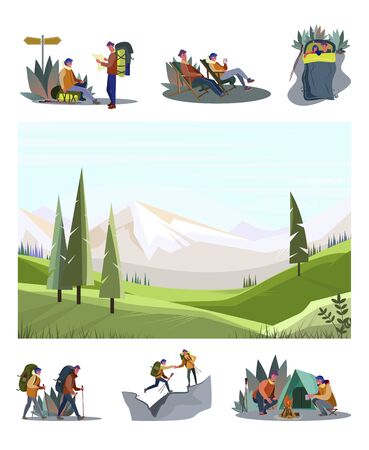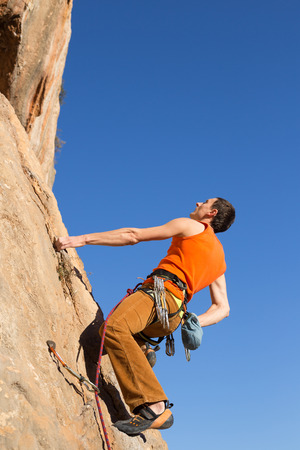1. Understanding U.S. Wilderness and Regional Risks
Exploring the great outdoors in the United States is an incredible experience, but it comes with its own set of challenges—especially if you’re aiming to keep your backpack as light as possible. Before heading out, it’s essential to understand the unique risks presented by different American wilderness regions. This awareness helps you pack smart, plan ahead, and stay safe along the trail.
Common Hazards Across American Wilderness Areas
The United States features a wide range of wilderness environments, each with its own hazards. Whether you’re trekking through the Rocky Mountains, desert canyons in the Southwest, or dense forests in the Pacific Northwest, being prepared for regional dangers is key. Below is an overview of what you might encounter:
| Region | Climate Hazards | Terrain Challenges | Wildlife Concerns |
|---|---|---|---|
| Mountain Ranges (Rockies, Sierra Nevada) | Sudden storms, hypothermia risk, altitude sickness | Steep slopes, loose rocks, snowfields | Bears (black & grizzly), mountain lions |
| Southwest Deserts (Grand Canyon, Mojave) | Extreme heat, dehydration, flash floods | Canyons, loose sand, limited water sources | Rattlesnakes, scorpions |
| Southeast Forests (Appalachians) | Humidity, thunderstorms, ticks carrying Lyme disease | Muddy trails, dense vegetation | Black bears, venomous snakes (copperheads) |
| Northern Lakes and Woods (Great Lakes Region) | Bugs (mosquitoes/flies), sudden cold snaps | Wet terrain, swampy areas | Wolves, black bears |
| Pacific Northwest Rainforests & Coastlines | Heavy rain, fog, hypothermia risk even in summer | Slick roots and rocks, river crossings | Cougars, black bears |
Packing Light While Staying Safe: What to Consider?
The goal of lightweight backpacking is to carry only what you need—but that means every item must be chosen with both utility and safety in mind. For example:
- Shelter: Compact tents or tarps that can withstand regional weather patterns.
- Clothing: Layers suitable for sudden temperature changes or wet conditions.
- Navigation: Maps and a compass or GPS device; don’t rely solely on your phone.
- First Aid: A basic kit customized for local hazards such as snakebite kits or tick removal tools.
- Food & Water: Lightweight filters or purification tablets for uncertain water sources.
- Bear Safety: In bear country, bear canisters or approved hanging systems are mandatory for food storage.
A Closer Look at Wildlife Encounters
Diverse wildlife is part of what makes U.S. wilderness adventures so memorable—but it also means knowing how to avoid dangerous encounters. For instance:
- Bears: Make noise while hiking and store all scented items properly.
- Snakes: Watch where you step and avoid reaching into crevices or under logs.
- Ticks: Wear long sleeves and pants in wooded or grassy areas; check yourself daily.
- Cougars/Mountain Lions: Don’t hike alone; keep children close; never run if you spot one—make yourself look large instead.
Your Next Steps in Risk Management Preparation
This foundation of understanding regional risks will help guide your gear choices and planning strategies for safer lightweight backpacking trips throughout the U.S. The next step is learning how to prepare for emergencies and respond effectively if something goes wrong on the trail.
2. Essential Gear for Lightweight Emergency Preparedness
When you’re backpacking in the diverse wilderness areas of the United States, staying safe means being prepared—but without weighing yourself down. Smart lightweight backpackers know how to balance minimalism with safety by carrying essential gear that serves multiple purposes. Here’s a practical guide to the must-have items that every U.S. backpacker should consider for emergency preparedness.
Why Go Lightweight?
Carrying less allows you to move faster, reduce fatigue, and enjoy your journey more. But in the unpredictable American backcountry—whether youre hiking the Rockies, exploring the Pacific Northwest, or trekking through desert canyons—cutting weight doesn’t mean cutting corners on safety.
Minimalist Safety Gear: What You Really Need
| Item | Purpose | U.S.-Specific Tip | Weight (Approx.) |
|---|---|---|---|
| Emergency Bivvy Sack | Shelter from cold, wind, and rain; can double as a signaling device | Choose bright orange for visibility; always check for National Park regulations on overnight gear | 3-6 oz |
| Ultralight Headlamp | Navigating at night, signaling for help | Packs like Yosemite require lights after dark; bring spare batteries suitable for cold temps | 1-3 oz |
| Water Purification System (filter or tabs) | Makes water safe to drink from streams/lakes | Pathogens vary by region; always treat water in high-use U.S. wilderness areas | 1-4 oz |
| Multi-tool or Lightweight Knife | First aid, repairs, food prep, emergencies | Compact multi-tools are legal in most U.S. parks but check local rules for blade length restrictions | 2-4 oz |
| Duct Tape (mini roll) | Gear repair, blisters, first aid patching | Wrap around your water bottle or trekking pole to save space | <1 oz |
| Whistle (pealess) | Loud emergency signaling—carries farther than shouting | A must-have in bear country and national forests with search & rescue protocols; three blasts = distress signal in U.S. | <1 oz |
| Personal Locator Beacon (PLB) or Satellite Messenger (optional but recommended) | Sends SOS signal and location to rescuers when out of cell range | Especially important in remote Western states; some national parks require carrying one for solo trips | 4-7 oz |
| Map & Compass (and/or GPS app with offline maps) | Navigating trails and off-trail routes safely if electronics fail | Always carry paper backup—U.S. wilderness areas often have unreliable cell service even near trailheads | <3 oz total (paper + mini compass) |
| Tiny First Aid Kit (customized) | Treat minor injuries: cuts, blisters, allergic reactions, etc. | Add antihistamines for bee stings and tick removal tools common in many U.S. regions; include personal meds and a few bandages/tape only—no need for bulky kits! | <3 oz (customized) |
Packing Tips: Multi-use Is Key!
- Bandaids double as tape for small fixes.
- Your buff or bandana works as a sling, towel, sun protection, or emergency mask.
- An ultralight trash compactor bag can become an emergency rain poncho or groundsheet.
The “10 Essentials”—Lightweight Edition for America’s Backcountry
The classic “10 Essentials” list is a great starting point for any trip into U.S. wilderness. For lightweight backpackers, it’s smart to adapt each item using minimalist options:
| Classic Essential | Lightweight Alternative Example |
|---|---|
| Navigation | Pocket map + compass + smartphone app with offline maps |
| Sunscreen/Sunglasses | Tiny tube SPF 50 + wraparound shades |
| Insulation | Puffy jacket compresses small; add lightweight hat/gloves depending on region |
| Illumination | Palm-sized headlamp + spare button batteries |
| First Aid Supplies | Tiny kit focused on YOUR needs/trip hazards |
| Fire Starter | Bic mini lighter + waterproof matches (tiny pill bottle) |
| Repair Kit/Tools | Duct tape wrap + micro multi-tool/knife |
| Nutrition | A few high-calorie bars as extra ration |
| Hydration | Treatment tabs/dropper + collapsible bottle/bladder |
| Shelter | Pocket bivvy or emergency blanket (or both if winter) |
A Note on Wildlife Safety: Bear Spray & Regional Needs
If you’re heading into grizzly country (like Yellowstone or Glacier National Park), consider adding bear spray—even though it adds some weight. In tick-heavy regions like the Appalachian Trail or Midwest, pack tweezers and insect repellent wipes. Always check regional requirements and recommendations before your trip.
Your Lightweight Emergency Kit: Always Evolving!
No matter where your U.S. adventure takes you—from California’s Sierra Nevada to Utah’s red rock canyons—the best minimalist safety kit is one you’ve practiced using and refined over time. Stay curious about new gear innovations and always adjust your essentials based on season, weather forecast, group size, and specific regional risks.

3. Navigation and Communication in Remote Areas
Staying Oriented: Tools for Wilderness Navigation
Lightweight backpacking in the U.S. wilderness means you’ll often find yourself far from marked trails, cell towers, or signs of civilization. That’s why knowing how to navigate using reliable tools is a must. Here’s a breakdown of the most effective navigation devices and tips on how to use them safely.
| Navigation Tool | Pros | Cons | Best Use Cases |
|---|---|---|---|
| Topographic Map & Compass | No batteries needed, always reliable, lightweight | Requires practice, can be hard to use in poor weather | Backcountry hiking, navigating off-trail areas |
| Handheld GPS Device | Accurate location tracking, stores waypoints/routes | Needs batteries, can fail in dense tree cover or deep canyons | Route finding, tracking progress over long distances |
| Smartphone GPS Apps (e.g., Gaia GPS, AllTrails) | User-friendly, multi-functional (maps/photos/notes) | Batteries drain quickly, less durable than dedicated GPS units | Casual hikes, supplementing traditional tools |
| Satellite Communicators (e.g., Garmin inReach, SPOT) | Sends messages/SOS from anywhere, tracks your route online for family/friends | Subscription fees, limited messaging features on some models | Solo trips, high-risk or remote routes where cell service is unavailable |
Tactics for Staying Oriented in Isolated U.S. Wilderness Areas
- Practice Map Reading: Before your trip, study your map at home and get familiar with contour lines and major landmarks.
- Always Carry a Compass: Even if you rely on electronic devices, a simple compass is your backup when batteries die or gadgets fail.
- Pace Counting & Landmarks: Track your progress by counting steps between known points or identifying natural features like streams or ridges.
- Avoid “Shortcutting” Off Trail: Stick to planned routes as much as possible—wandering off-trail increases the risk of getting lost.
The Role of Satellite Communication Devices in Emergency Preparedness
If you plan to backpack in truly remote American wilds—think parts of the Rockies, Alaska backcountry, or deep canyon country—a satellite communicator is a smart investment. These devices let you send text updates or trigger an SOS signal even without cell coverage. This gives both peace of mind for you and reassurance for loved ones following along at home.
Tips for Effective Use:
- Check Battery Life: Charge fully before leaving and carry extra batteries or a small power bank.
- Create Check-In Points: Set up regular check-ins with someone at home so they know your progress and plans.
- Edit Pre-set Messages: Program useful preset messages (“I’m okay,” “Running late,” etc.) before your trip for quick communication.
Navigating vast American wilderness areas safely is all about preparation and using the right combination of traditional skills and modern technology. By practicing with maps and compasses and adding satellite devices for backup communication, you’ll boost both your confidence and safety on any lightweight backpacking adventure.
4. First Aid Skills and Health Considerations
Key First Aid Knowledge for U.S. Wilderness Backpackers
When you’re backpacking light through America’s wilderness, knowing first aid is just as important as packing the right gear. Common medical emergencies like allergic reactions, insect or animal bites, and hypothermia can quickly become serious if you’re not prepared. Let’s break down what you need to know to stay safe on the trail.
Common Wilderness Medical Emergencies
| Emergency | Symptoms | What To Do |
|---|---|---|
| Allergic Reactions (Anaphylaxis) | Swelling, hives, difficulty breathing, rapid heartbeat | Use an epinephrine auto-injector (EpiPen) if prescribed; call for help; keep person calm and lying down |
| Bites (Snake, Spider, Tick) | Pain, swelling, redness; tick bite may show a bullseye rash; possible fever or chills | Clean wound with water; remove ticks with tweezers; avoid tourniquets for snake bites; seek medical help ASAP |
| Hypothermia | Shivering, confusion, slurred speech, loss of coordination | Get person dry and warm; replace wet clothes; use sleeping bag or emergency blanket; give warm drinks if conscious |
Essential First Aid Skills for Backpackers
- CPR and Basic Life Support: Know how to perform CPR and recognize signs of cardiac arrest.
- Treating Cuts and Scrapes: Clean wounds thoroughly and apply bandages to prevent infection.
- Splinting Sprains and Fractures: Use trekking poles or sticks to immobilize injured limbs before moving someone.
- Recognizing Dehydration and Heat Illness: Watch for headache, dizziness, dark urine—rest in shade and rehydrate immediately.
- Handling Blisters: Cover hot spots early with moleskin or tape to prevent blisters from forming.
Packing a Lightweight First Aid Kit
Your first aid kit should be compact but complete. Include:
- Adhesive bandages & gauze pads
- A small roll of tape & blister care supplies
- A pair of tweezers (for splinters or ticks)
- An emergency blanket (lightweight but lifesaving!)
- A few doses of antihistamines and pain relievers (like ibuprofen)
- If needed, an EpiPen (talk to your doctor if you have allergies)
- Sterile wipes or alcohol pads for cleaning wounds
Cultural Note: U.S. Wilderness Norms
In the U.S., it’s common practice to share first aid supplies with other hikers if someone’s in trouble. Always let a friend or ranger know your route before heading out—this local custom is a key part of American outdoor safety culture!
5. Wildlife and Environmental Safety
Best Practices for Avoiding Dangerous Encounters with American Wildlife
Exploring the U.S. wilderness brings you close to a variety of wild animals, from black bears and mountain lions to rattlesnakes and ticks. While wildlife sightings can be thrilling, it’s important to follow safety measures to avoid risky encounters, especially when backpacking light and carrying minimal gear.
Common U.S. Wildlife Hazards and How to Stay Safe
| Wildlife | Risks | Safety Tips |
|---|---|---|
| Bears (Black & Grizzly) | Food attraction, potential aggression if surprised or with cubs | Store food in bear-proof containers; cook and eat away from camp; make noise while hiking; never approach a bear |
| Mountain Lions | Rare attacks, mostly if surprised or feeling threatened | Keep children close; do not run; maintain eye contact and back away slowly; make yourself look bigger if threatened |
| Rattlesnakes | Bites when startled or stepped on | Watch where you step or place hands; avoid tall grass and rocks; wear long pants and boots in snake country |
| Ticks & Mosquitoes | Disease transmission (Lyme disease, West Nile Virus) | Wear long sleeves and pants; use insect repellent; check for ticks daily; avoid stagnant water areas |
Understanding Ecological Factors: Fires and Flash Floods
The U.S. wilderness is shaped by powerful natural forces like wildfires and flash floods. Knowing how to recognize risks and respond quickly is key for lightweight backpackers who need to stay agile and prepared.
Wildfire Awareness & Prevention Tips
- Check fire restrictions: Before your trip, look up local fire danger levels and regulations. Many areas restrict campfires during dry seasons.
- Avoid open flames: Use a portable stove rather than building a fire. Never leave flames unattended.
- Watch for smoke: If you see or smell smoke, assess wind direction, have an evacuation plan, and move to safety if needed.
- Packing tip: Carry a small emergency face mask or bandana to filter smoke if needed.
Flash Flood Safety in Canyons and Desert Regions
- Avoid narrow canyons during storms: Even distant rain can cause sudden flooding.
- Check weather forecasts: Always review the forecast before heading out—postpone your trip if heavy rain is predicted.
- Identify escape routes: When camping near riverbeds or washes, know the quickest way to higher ground.
- Packing tip: Lightweight gear lets you pack up quickly if you need to evacuate fast.
Quick Reference Table: Environmental Hazards and Responses
| Hazard | Main Risk Areas | Your Response Plan |
|---|---|---|
| Wildfires | Drought-prone forests, Western U.S., high winds days | Avoid fire use; know local alerts; prepare for rapid evacuation if needed |
| Flash Floods | Canyons, desert washes, mountain valleys after rainstorms | Avoid low-lying campsites; check escape routes; move uphill at first sign of rising water or thunderstorm upstream |
By understanding these best practices for wildlife encounters and environmental hazards, lightweight backpackers can confidently enjoy America’s wild places while minimizing risks to themselves—and to the ecosystems they visit.
6. Risk Assessment and Decision Making
Understanding Wilderness Risks
When you head out for a lightweight backpacking trip in the U.S., it’s important to remember that nature is always dynamic. Weather, terrain, wildlife, and your own physical condition can change quickly. Good risk assessment helps you stay safe by making smart choices as situations shift.
Strategies for Evaluating Risk
Before you even hit the trail, take time to identify potential hazards. Ask yourself questions like: What is the weather forecast? Are there river crossings or steep slopes? Will you be in bear country? Are wildfires or flash floods possible? The table below offers a simple way to assess common risks:
| Risk Factor | What to Check | Mitigation Steps |
|---|---|---|
| Weather Changes | Forecast, sky conditions, wind patterns | Packing extra layers, rain gear, shelter options |
| Wildlife Encounters | Bear activity reports, food storage regulations | Bear canister use, proper food handling, making noise |
| Terrain Hazards | Maps, recent trail reports, visible obstacles | Plan alternate routes, use trekking poles, pace yourself |
| Your Health & Fitness | Current energy level, hydration status, injuries | Regular breaks, hydrate/eat frequently, adjust mileage |
| Navigation Errors | Map/GPS proficiency, landmark familiarity | Frequent position checks, travel with partner if possible |
Making Safe Choices on the Trail
A big part of risk management is recognizing when to stick with your plan and when to adapt. Here are some tips:
- Pace Yourself: Don’t push too hard. Listen to your body and rest when needed.
- Watch the Weather: If storms are coming in fast or temperatures drop sharply, consider turning back or setting up camp early.
- Avoid “Summit Fever”: Getting to your planned destination isn’t worth risking your safety. Be willing to change goals based on current conditions.
- Stay Found: Regularly confirm your location using a map and compass or GPS so you don’t get off track.
- Buddy System: If traveling with others, make decisions as a group and watch out for one another.
When to Change Plans in Dynamic Situations
The wilderness doesn’t always follow your schedule. Be ready to shift gears if you notice any of these warning signs:
- You’re feeling exhausted or showing signs of heat/cold stress.
- The weather turns dangerous (lightning storms, heavy snow/rain).
- You run low on water or food supplies.
- The trail becomes impassable due to landslides or flooding.
- Your navigation tools aren’t working or you’re unsure of your location.
A Quick Decision-Making Checklist:
- Stop: Pause and assess what’s changed.
- Think: Review your options and check resources (map, weather updates).
- Act: Choose the safest option—even if it means turning back or waiting out the weather.
- Communicate: If possible, let someone know about changes to your plan using a satellite messenger or phone (when signal allows).


